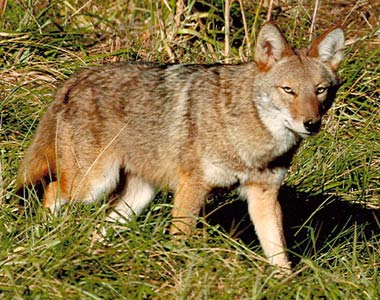Wildlife management is about providing and manipulating plant communities. It’s commonly referred to as habitat management, and it’s critical for the survival of many plant and animal species. Sometimes wildlife management is also about predators. Predators are wildlife, but the term predators does necessarily refer to any particular animal. Some predators are generalist, some are quite specific. A skunk may be a predator of ground nesting birds, but not of birds that nest in trees. Raccoons would be more likely to climb and impact critters found in trees.
Native and introduced predators abound in most plant communities. Indigenous predators such as coyote and bobcat prey on many wildlife species including white-tailed deer. In fact, studies indicate significant fawn losses due to coyote predation. Fecal sample analysis of coyotes found deer hair in droppings during every month of the year. Native predators, such as bobcats, coyotes, raccoons, skunks, foxes, and snakes, have an impact on birds, small mammals and herptofauna.

While natural predators are an integral part of an ecosystem, it is sometimes desirable to control their numbers just as it is a deer population. Implementation of a predator control program may be an effective tool in protecting some wildlife species, such as bobwhite quail. The optimum time for coyote control to reduce impact on fawns is from January through March, before coyote pups and deer fawns are born. Non-native species that can be detrimental to wildlife populations are fire ants and feral hogs.
Areas with high densities of fire ants can impact the survival of many wildlife species. Fire ants attack deer fawns, young birds, small mammals, and reptiles. Furthermore, fire ants compete with species such as Texas horned lizards and young quail for food. This limiting factor may be the most significant reason for the decline of these species.
It is generally not practical or necessary to attempt to control fire ants on large land tracts of land, but it is often useful to attempt to establish some fire-ant free areas. The product Logic is one choice for fire ant control. Some studies have indicated that it works best when used in September because of the time lag. September use is reported to control fire ants through the bird nesting season the following spring.
Feral hogs should be controlled by shooting, hog trapping, and using dogs whenever possible. Most success at this usually occurs during the winter when feral hogs are having to travel more to find food. Besides rooting up pastures, feral hogs compete directly with deer, turkey and most other wildlife species that rely heavily on acorns and other hard and soft mast for winter food. Deer also tend to avoid areas when feral hogs are present.
In summary, sometimes wildlife management means predator control. It is possible to manage for certain wildlife species and against others. In most cases however, predator control for the sake of one species usually has benefits that are greater than just a single species. Predator control is not for everyone, and is not always warranted, but it can be a critical part of wildlife management depending on the situation.